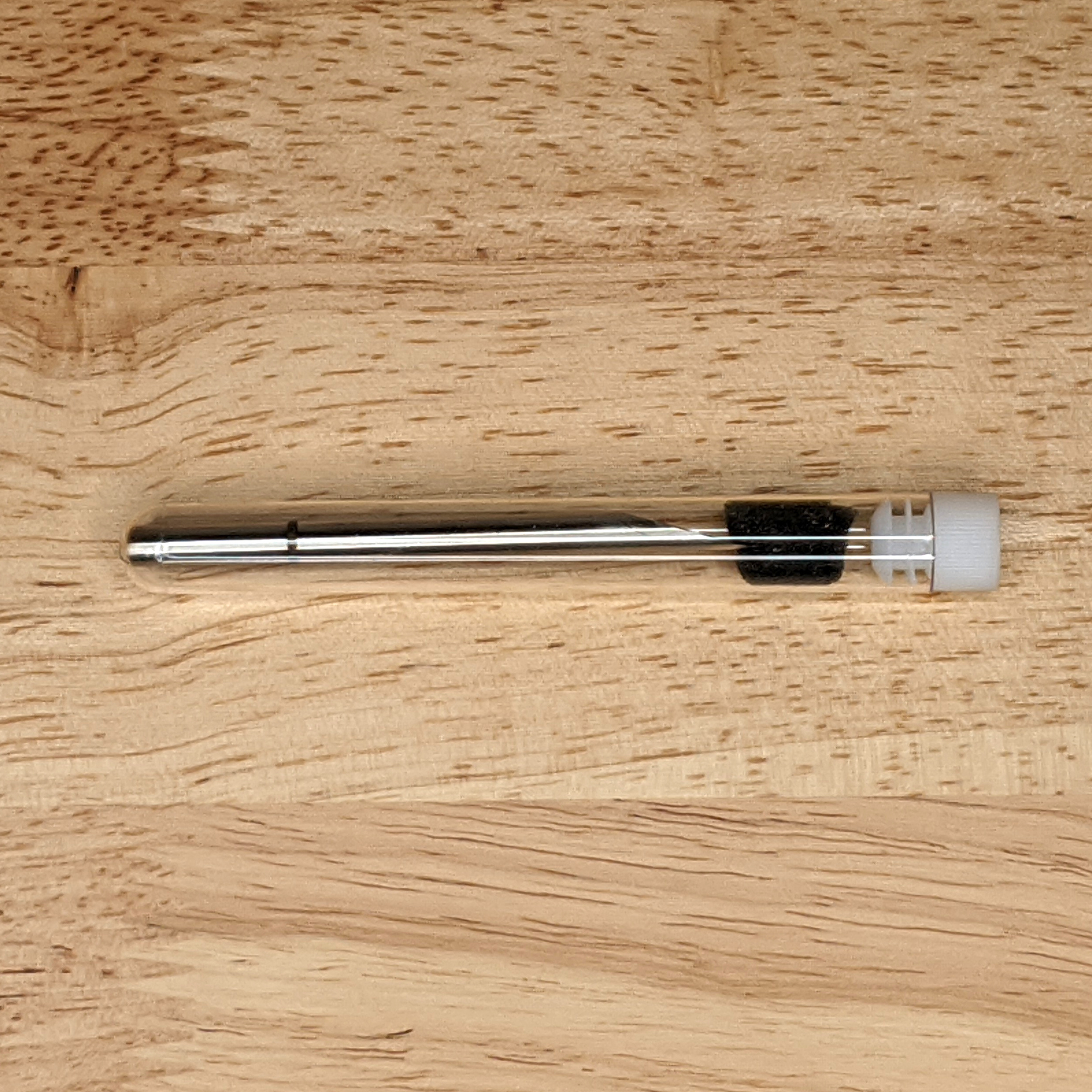

flexClass (HID iClass)
The flexClass is the only HID iClass compatible subdermal implant on the market.
- 8mm x 25mm flexClass 2kB 13.56MHz HID iClass subdermal chip implant
- Want an analog? Check out the STL
- Personalization mode set allowing card & fob cloning to the flexClass
- 5mm (4G) Flex Install Needle Included! *Details & Warning
$199.00 – $302.34
More Details
WARNING This kit definitely contains dangerous things. While our chip implants have undergone several quality checks during manufacture and have been put through a battery of tests, nothing has been certified by any government regulatory agency for implantation or use inside the human body. Your personal decision to purchase and ultimately the safe use of these devices is strictly your responsibility and at your own risk. The flexClass is subdermal flex implant, conceived of and designed by community member @leumas95, is fully encapsulated in our custom biopolymer. It contains a 13.56MHz high frequency programmable HID standard (legacy) iClass transponder chip that allows you to *enroll it with your HID access system, or use our Proxmark3 RFID research tool to clone / copy an HID iClass credential to it.* Usually it’s as simple as enrolling, but sometimes HID iClass systems will not enroll a blank chip and require cloning a legit card
flexClass Kit
Your flexClass kit comes with the following items.
- flexClass 2kB implant sealed in vial of chlorhexidine solution
- Custom 4G (5mm) flex installation needle (sterilized)
Types of iClass chips
The flexClass chip works with iClass “legacy” or standard iClass systems, not with iClass SE or iClass SEOS.. though there may be some potential tricks that can be used to get around these limitations. Those possibilities are being explored now, but have not been sorted out yet. There are a few different types of iClass cards and chips out in the world, and identifying them is kind of a pain because the term iClass is not describing a specific product, protocol, or standard. The HID company uses iClass strictly as a marketing term only, so figuring out what types of iClass systems use which types of chips is not an easy task. If you have questions about compatibility with your system, post on the forum. We have members of the community there that can help.
Using your flexClass implant
You have two ways of getting your flexClass working with your HID iClass standard system – enrollment and cloning.
• Enrollment is the normal way one associates a new credential with an HID access control system. Typically it involves going to the security office to get a new badge or fob or card, and the security admin takes a fresh card or badge out and “enrolls it”. This process basically looks like they just tap it to a reader on the desk at the security office, but it is programming some secret stuff to the chip in the new credential and associating it with you (or whoever the new credential is for) within the system. In theory, if you can convince the security admin, you should be able to tap your flexClass chip to this reader during an enrollment action and it should all work fine. In some cases though, there are some specific technical reasons why the flexClass may fail to enroll. If this is the case, then you will need to move on to option 2 – cloning.
• Cloning is the act of copying important identifying data used by the access control system to identify the credential holder from one physical credential to another. To clone a legitimate enrolled iClass standard 13.56MHz credential to your flexClass, you will need to use a Proxmark3 tool and some special commands. For more information on cloning HID iClass legacy / standard credentials, visit this forum post; https://forum.dangerousthings.com/t/cloning-an-hid-iclass-credential-to-your-flexclass
Professional installation notes
The flexClass implant is approximately 7.5mm wide by 25mm long, with an average thickness of 0.4mm. Installation should always be done by a professional.
- Do not install under any gripping surface (e.g. no palm side installations)
- Do not install atop or parallel to any joints (flex devices are only "semi-flexible")
Important things to know about flex implants
• The biopolymer is ISO 10993 and USP Class VI tested and certified, however the final product has not been tested post-processing, meaning material changes during processing could render the final product unsafe in some way.• There is no "preferred" location for installation of a flex device. Customers are free to install a flex into any area of the body their installation professional is comfortable with, as long as it is in the fascia layer between dermis and muscle tissue and not in an area of flexion or under a gripping surface. Even though we use images which suggest installation above the second metacarpal of one of the fingers, it is not an ideal location for such a device. Fingers are filled with tendons, nerve bundles, and very important things all packed into a very tight space. We urge you to think about easier locations like the back of the hand or in the arm/wrist.
